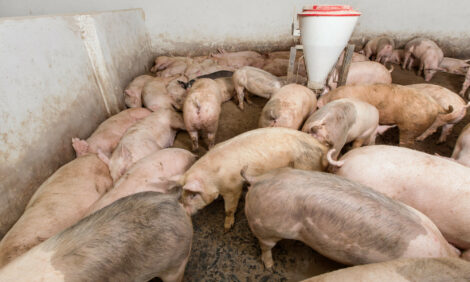



Heavy Pigs at Weaning Improve Growth, Efficiency and Carcass Value
Weaning weight affects subsequent performance and carcass quality, according to Hypor, which is why their breeding programme fouses on the sow's 'weaning capacity'.Growth, Efficiency and Carcass Value
One of the key principles of the Weaning Capacity approach to genetic selection is that the focus on quality and consistency of the weaned pig provides the potential for fast, lean efficient growth after weaning. Both research and commercial experience demonstrate a clear relationship between weaning weight and growth rate to market. Also, faster growing pigs are more efficient converters of feed and deposit lean tissue faster, resulting in better carcass quality and a higher value per pig sold.
Clearly, weaning weight is a function of weaning age and growth rate during the suckling period. Generally, weaning age has been increasing in many European countries such that it is around 24 to 25 days on average. Even in North America, where a large part of the industry changed to weaning at 16-18 days during the 80s and 90s, there is now a realisation that later weaning has major benefits in terms of growth and production costs. In addition to optimising weaning age, implementing management measures to increase weaning weight as outlined in the article Maximising weaning weight will help to ensure rapid post weaning growth.
The Nursery Phase
The period immediately after weaning is one of the most critical because it determines growth rate right up to market weight. Weaning weight is a major determinant of growth because bigger pigs eat more feed, have fewer health problems and therefore grow faster (Table 1).

In this large-scale trial, pigs were weaned at ages from 12 to 21 days. As weaning age and weight increased, feed intake and feed efficiency improved, resulting in a higher weight at 42 days post weaning. Mortality also fell sharply as weaning age increased.
Heavier pigs at weaning have a better developed digestive system and are able to digest solid feed more efficiently, which not only leads to faster growth but also results in a lower incidence of health problems such as scouring.
The Finishing Stage
Weaning age continues to have a large influence on the performance of pigs at the finisher stage, because they enter the finishing barn at a higher weight and consequently continue to grow faster and more efficiently.
Because the majority of feed used is consumed at this stage, differences in efficiency have a large effect on production costs and margins (Table 2). In a system with fixed availability of finishing space, more rapid growth results in a higher carcass weight and more revenue, as shown in the table. Although production cost per pig increases due to the heavier slaughter weight and consequently more feed consumed, the income over variable costs continues to increase with weaning age.

Growth Effects on Carcass Quality
There has recently been considerable interest in the effects on growth and carcass quality of reduced birth weight resulting from the rapid increase in numbers born achieved in some countries. While this is a complicated topic, it seem quite clear that pigs with a lower birth weight (and by extension a lower weaning weight) not only grow more slowly and have more health problems, but have poorer carcass quality at the same carcass weight (Table 3).

In this study, the percentage of body fat was higher and the size of the cells in the fat tissue was larger in the low birth weight pigs. Additionally, the lean meat content of the carcass was considerably lower, while tenderness of the meat was significantly reduced.
Growth rate during the nursery phase has been shown to influence carcass quality, especially loin eye depth, but also backfat depth. Weaning weight is the biggest influence on nursery growth rate but any factor that results in a reduction in growth rate – such as disease, poor environment or inadequate diets – will also adversely affect carcass quality.
This is because in the early stages of growth pigs are depositing lean and very little fat and the more rapidly they lay it down the higher the lean content in the carcass. Conversely, slow early growth means that more fat is deposited at the later stages of growth and the loin is less well developed at market weight.








